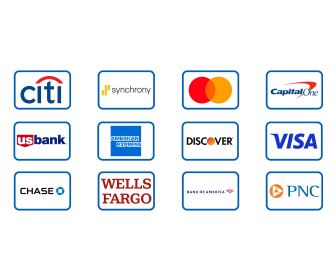How Your Credit Utilization Ratio Affects Your Score — And What to Do
Your credit utilization ratio might sound like technical jargon, but it’s one of the most important numbers in your financial life. Simply put, it’s how much of your available credit you’re using — and it accounts for about 30% of your FICO® Score. In 2025, as interest rates and spending rise, understanding this ratio can mean the difference between good credit and great credit.
1. What Is Credit Utilization?
Credit utilization measures the percentage of your total available credit that’s currently in use. It’s calculated both per card and across all your accounts. For example, if you have a $10,000 total credit limit and carry a $3,000 balance, your utilization ratio is 30%.
The lower the ratio, the better. Lenders view high utilization as a sign of financial stress — even if you always pay on time.
2. Why It Matters So Much
Credit utilization is the second-most influential factor in your credit score, right after payment history. According to Experian, borrowers with top-tier scores (800+) typically keep their utilization under 10%. Staying under 30% is considered healthy, but the closer you get to zero, the better your score reacts.
That’s because high utilization suggests you’re relying heavily on credit — even if temporarily. Lenders prefer borrowers who use credit lightly but consistently, signaling financial stability.
3. How It’s Calculated (and When)
Your utilization is usually based on the balance that appears on your statement closing date, not your due date. This means even if you pay off your balance in full afterward, a high reported balance can still temporarily lower your score. Timing matters — especially before applying for loans or mortgages.
4. How to Improve Your Credit Utilization Ratio
- Pay early or multiple times per month: Make a mid-cycle payment before the statement closes to reduce your reported balance.
- Request higher credit limits: A larger total limit automatically lowers your utilization if spending stays the same.
- Spread charges across multiple cards: Instead of maxing one card, use several lightly to keep each individual utilization below 30%.
- Don’t close old cards: Closing accounts shrinks total available credit and can spike utilization overnight.
- Avoid carrying balances: Even small rolling balances at 25% APR cost you more than they help your score.
Expert tip: Keep each card’s utilization below 10%, not just your total. FICO® models score both individual and aggregate ratios separately.
5. What Happens If You Max Out a Card
Even one card near its limit can significantly drag your score down, regardless of total utilization. A single card at 95% usage can drop your score by 30–50 points, especially if it’s your oldest account. Maxed-out cards also signal potential financial strain to lenders and can trigger automatic credit limit reviews or higher APRs.
Final Thoughts
Your credit utilization ratio isn’t just a number — it’s a reflection of your financial rhythm. Managing it wisely signals to lenders that you’re in control, not overextended. Keep balances low, pay strategically, and request higher limits responsibly. Over time, that discipline will do more for your credit score than any quick fix ever could.
Not financial advice. Credit scoring models vary by lender. Always verify your utilization data through official reports at annualcreditreport.com.
Continue reading: Is It Better to Pay Off a Credit Card Early or Keep a Low Balance? · Why Having Too Many Credit Cards Might Hurt Your Credit



